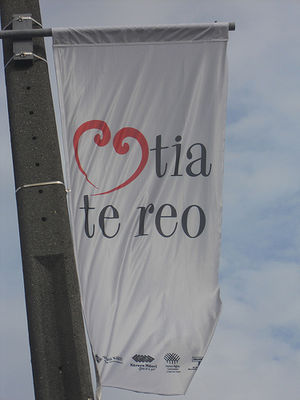What do you know about Māori language and culture?
| Practice Context | |
|---|---|
| Cultural Competence | |
| Applying Te Reo and Tikaka in practice | Objectives | What do you know about Māori language and culture? | Implications for your teaching practice | e-Learning activity - Exploring Te Reo and Tikaka. | Learning Summary |
In the previous module, you explored the principles of the Te Tiriti o Waitangi; as part of houring these principles and hopefully as part of good practice as a teriary educator one of your aims when teaching in a New Zealand context is to provide safe and supportive learning environments for Māori learners and the best possible learning environments for all learners.
Part of providing a safe and supportive environment is to acknowledge and respect a learners language and cultural beliefs. This becomes even more significant to both Māori and English language and culture in the New Zealand context because of the obligations and partnership agreed to under Te Tiriti o Waitangi.
Both language and cultural practices are key to maintaining cultural identity and establishing a sense of belonging. Te Reo Māori is one of the three official languages in New Zealand. The ability to recognize and respectfully use Māori words and phrases can help provide that safe environment for Māori learners.
It is useful to also recognize that as with language in many countries there are regional differences in dialect. A dialect difference that is significant in Otago is the preference for the consonant ‘k’ over ‘ng’; eg, Kai Tahu instead of Ngai Tahu and you would have noticed the use of ‘’’tikaka’’’ instead of ‘’’tikanga’’’.
| Are there specific dialect differences in your local community? |
Tikaka/“Tikanga can be described as general behaviour guidelines for daily life and interaction in Māori culture. Tikanga is commonly based on experience and learning that has been handed down through generations. It is based on logic and common sense associated with a Māori world view.”(para 1) [1]
*Using your learning journal or other chosen method of recording your learning note down some of the key words and phrases that you already know and comfortably use.
‘’’Consider the following questions:’’’
|
References
- ↑ Te Taura Whiri i te reo Māori / Māori Language Commission. (n.d). ‘’Tikanga Māori - Protocols overview.’’ Retrieved from http://www.korero.maori.nz/forlearners/protocols.
